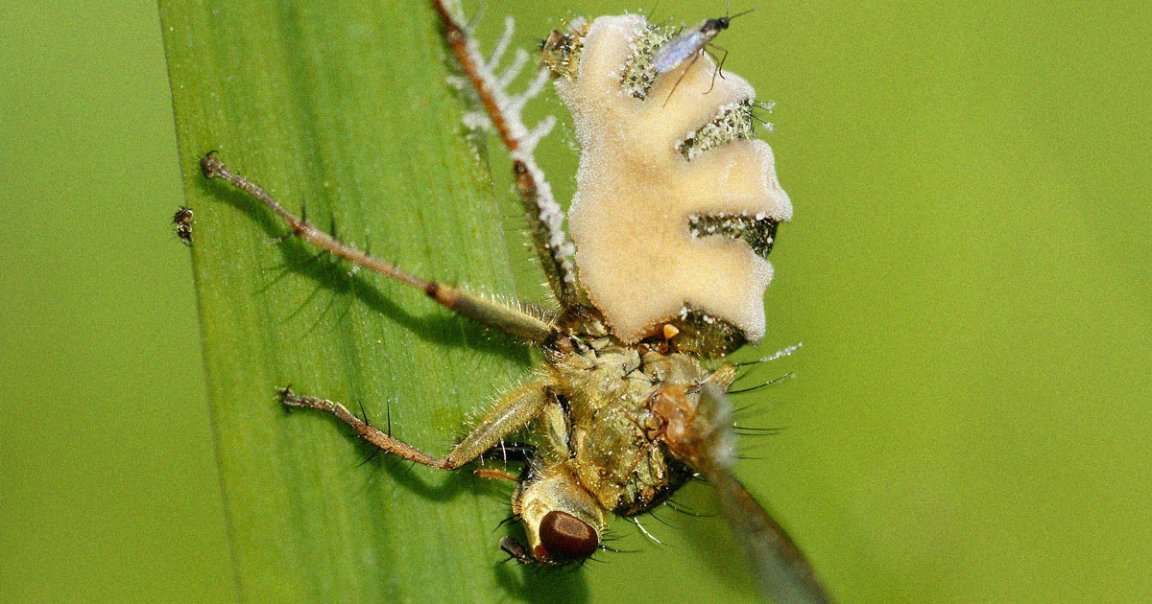
Fungal Provocateur
Welcome to hell. According to University of Copenhagen scientists, a pathogenic zombie fungus (yes, you read that right) infects female houseflies and (sorry in advance) seduces male flies into mating with their undead corpses.
The researchers’ study, published The ISME Journal, purports that the fungus, called Entomophthora muscae, slowly eats infected flies alive from within. When the fly is all but dead a few days later, the fungus forces its victim to fly to the highest point in its vicinity. And from there, like a winged siren courting bug-eyed sailors to their sorry doom, the undead carcass unleashes powerful chemical signals called sesquiterpenes — which the male insects simply can’t resist.
“The chemical signals act as pheromones that bewitch male flies and cause an incredible urge for them to mate with lifeless female carcasses,” Henrik H. De Fine Licht, associate professor at the University of Copenhagen and study co-author, said in a press release.
Pure Romance
The researchers believe this bizarre event is a unique — albeit spooky — survival tactic for the fungal fiend. Once the male flies succumb to their lust, they’re infected as well.
“Our observations suggest that this is a very deliberate strategy for the fungus,” continued De Fine Licht, adding that the invader is “a true master of manipulation.”
In true zombie fashion, the study also showed that the longer a fly is dead, the stronger it becomes — a phenomenon that the scientists contribute to the increased buildup of seductively-fragranced fungal spores.
Trés taboo. But beyond being super gross, the scientists did say in the release that the viral fungi may have a practical application: the creation of pheromone-secreting, fly-beguiling traps.
Kind of cool! Although, based on almost every zombie movie we’ve ever seen… maybe we should just… leave the flesh-eating spores alone? You know. Just in case.
More on zombies: Vaccine Successfully Stalls Elements of Aging in Mice